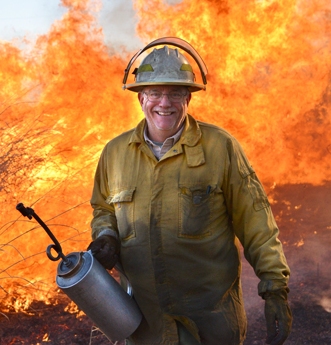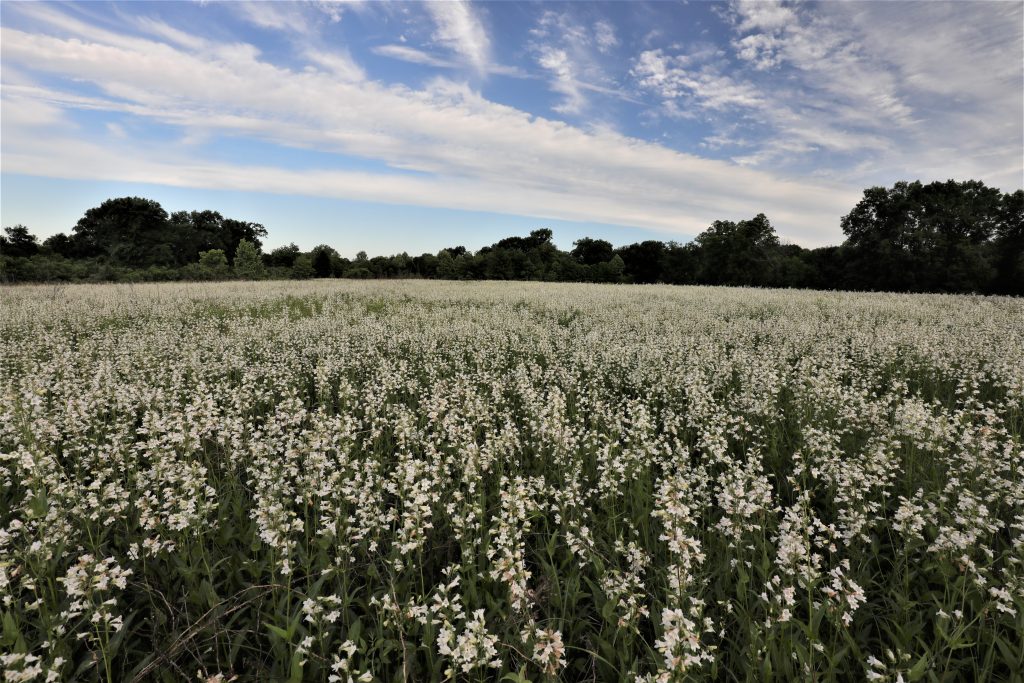
… then I have pollinator habitat! The field pictured, I presume, is the result of my sericea lespedeza management program. The field has a serious infestation of sericea lespedeza, which I have been haphazardly trying to control the past few years until last year. Last year the infestation became severe enough I decided to get aggressive with it or fear losing it to total dominance by sericea and loss of significant habitat value.
The field was burned the second week of August and patches of sericea that didn’t burn because they were too thick, were mowed. I followed that up with an herbicide application of PastureGard HL at the rate of 1 pint per acre in late September. The above image is what the field looks like this spring.
Admittedly, there was penstemon present before sericea treatment but not at this density. The questions in my mind are: Did killing the sericea release the penstemon? Did burning in August stimulate the penstemon? Is penstemon tolerant to PastureGard HL? Or all of the above? All questions I hope to learn the answers to over the next few years.
The good news, upon casual observation, I got 90 – 95% control of sericea. There are still plants there but some targeted spot spraying will keep the sericea in check – for this year.
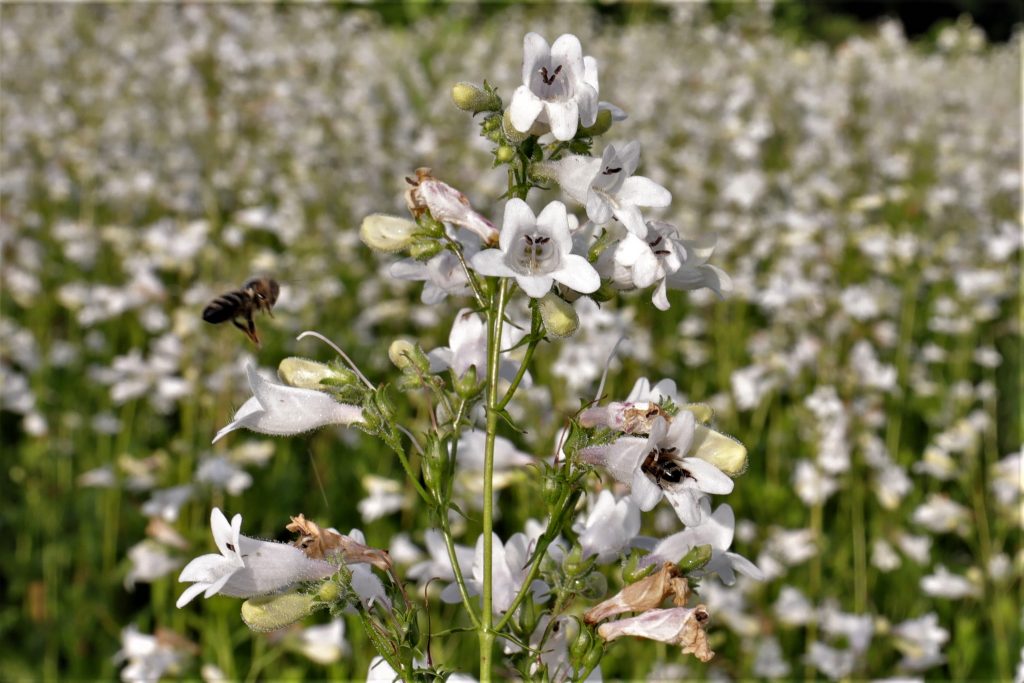
After photographing the penstemon I took a look around at a few other native plants flowering on my farm. Spiderwort has always intrigued me. Most folks I know call it spiderwort but there are a couple of common names used that I think best describe the plant, a.k.a. snotweed or cow slobbers. When the stem is broken it oozes a clear, viscous sap that resembles . . . one of its common names. I really think cow slobbers is the best descriptor.
There are several species of spiderwort and, of those, they can be basically divided into two different categories, one group of species adapted to woodland settings and the others to open grasslands. Spiderworts are used by a number of pollinators.
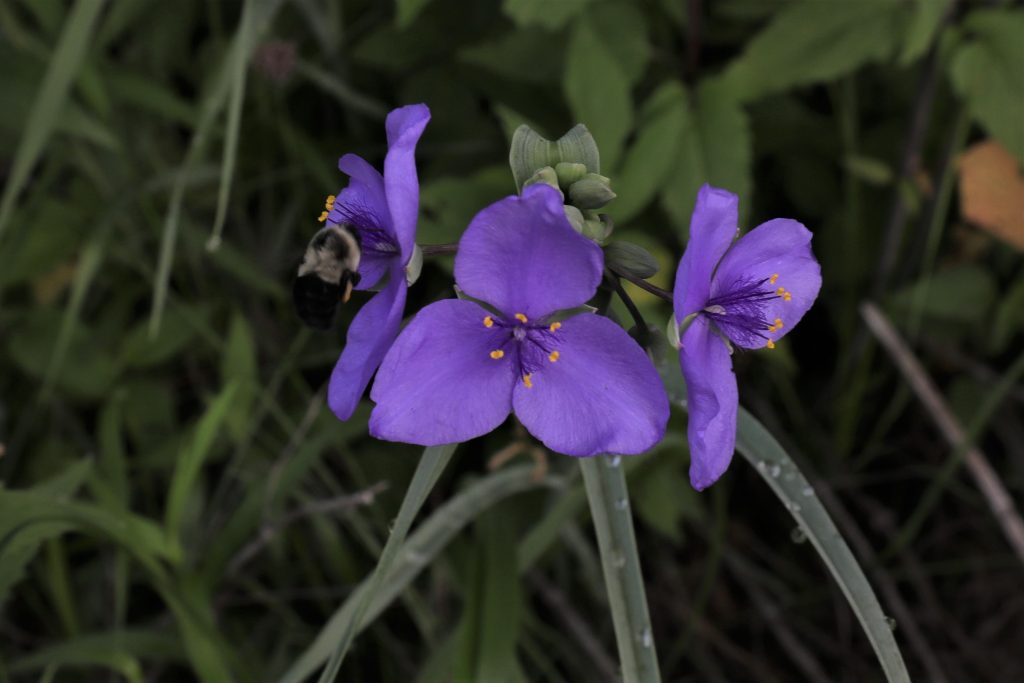
Eastern gamagrass is a perennial grass that is a distant relative to corn. Like corn, it is monoecious, having separate male and female flowers on the same plant, but unlike corn, both are on the same spike. The photographs below show the stamens and stigmas. The timing of the photographs just happens to be of only stamens and stigmas. Both will be expressed on the same seed stalk within hours or a day.
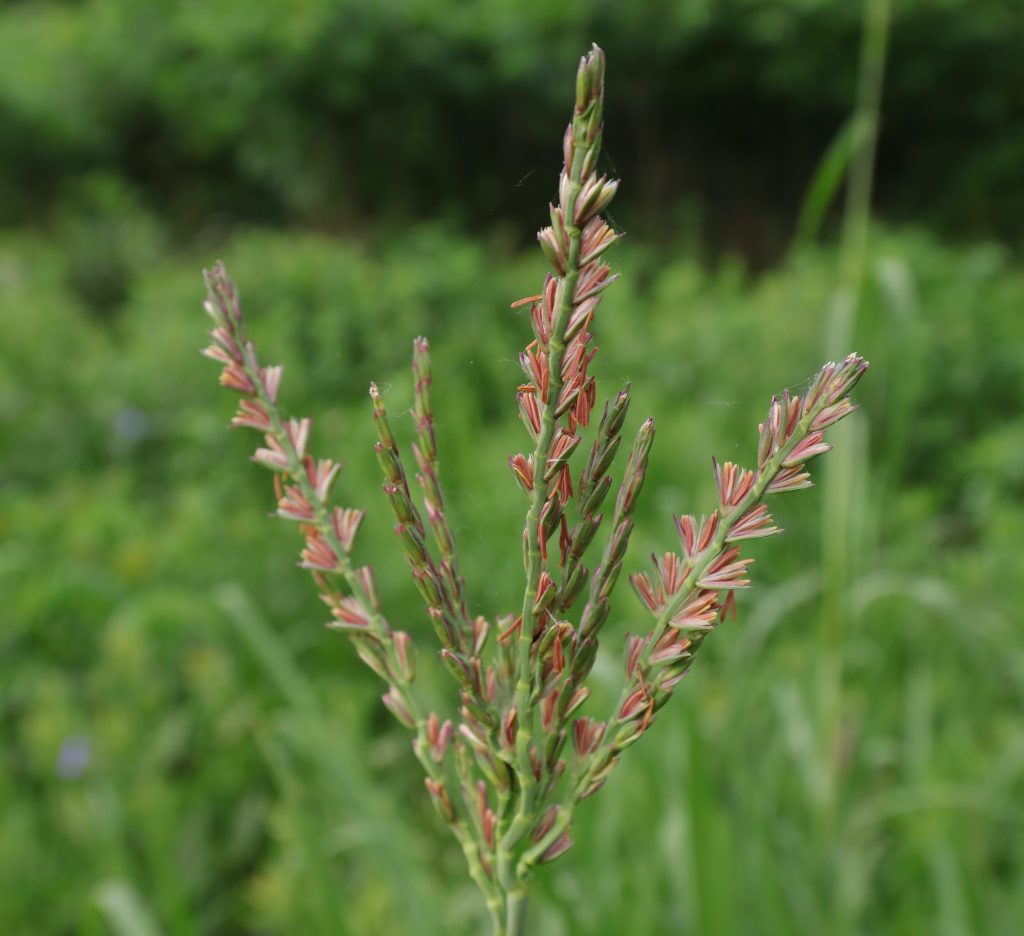
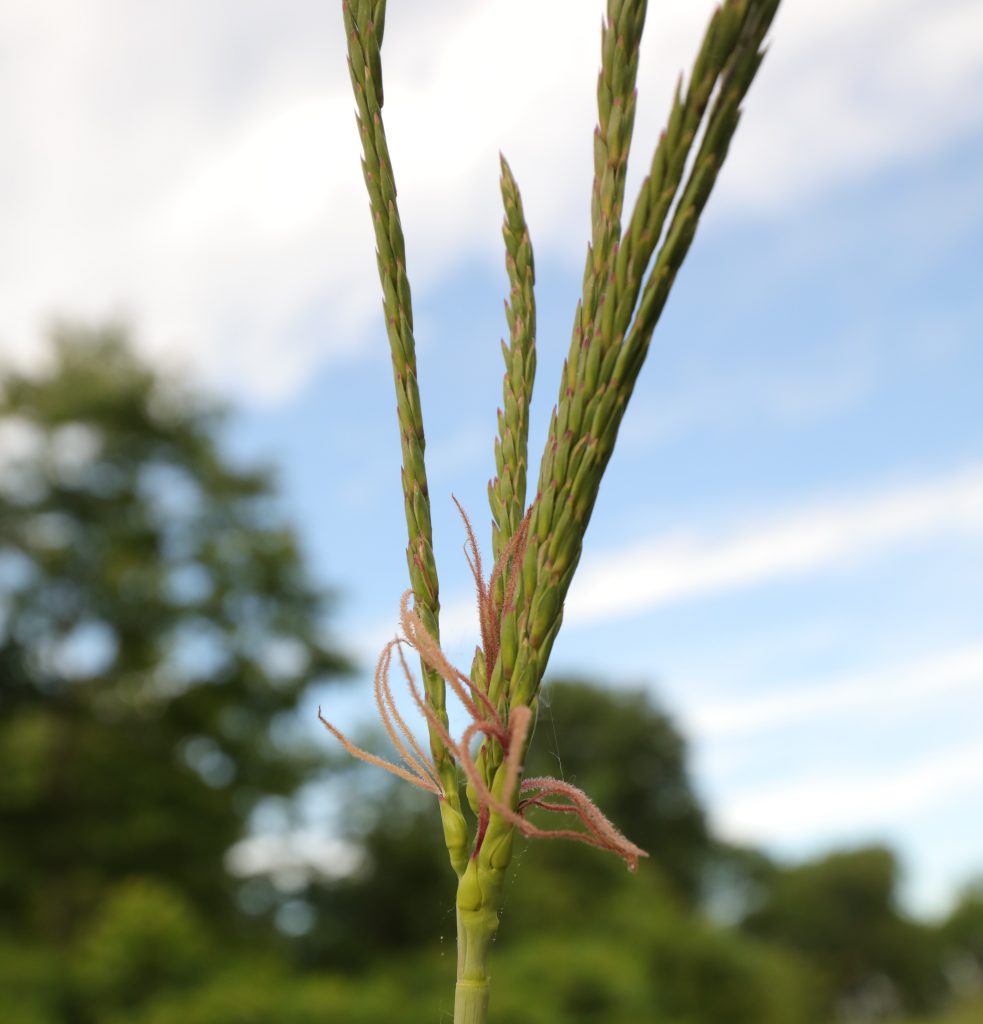
Sensitive briar or cat-claw sensitive briar has an interesting bloom, the pink florets arranged to form a pink ball, with each floret tipped in yellow. Close examination of the “thorns” show they are shaped like a cat-claw and if you’ve ever inadvertently walked through them in the prairie you understand how this plant got one of its common names, devil’s shoestrings.
In summer, when the seed pods ripen and dry, they will twist and split open, expelling their seeds on the ground. Collecting their seed can be a challenge, one because of the “cat-claws” and two your timing has to just right or the pods have burst open and shattered all their seed. The folding leaves of sensitive briar are fun to show kids why this plant got its name, when they fold up upon touch. Livestock and deer browse the plants; quail, other birds and rodents eat the seeds.
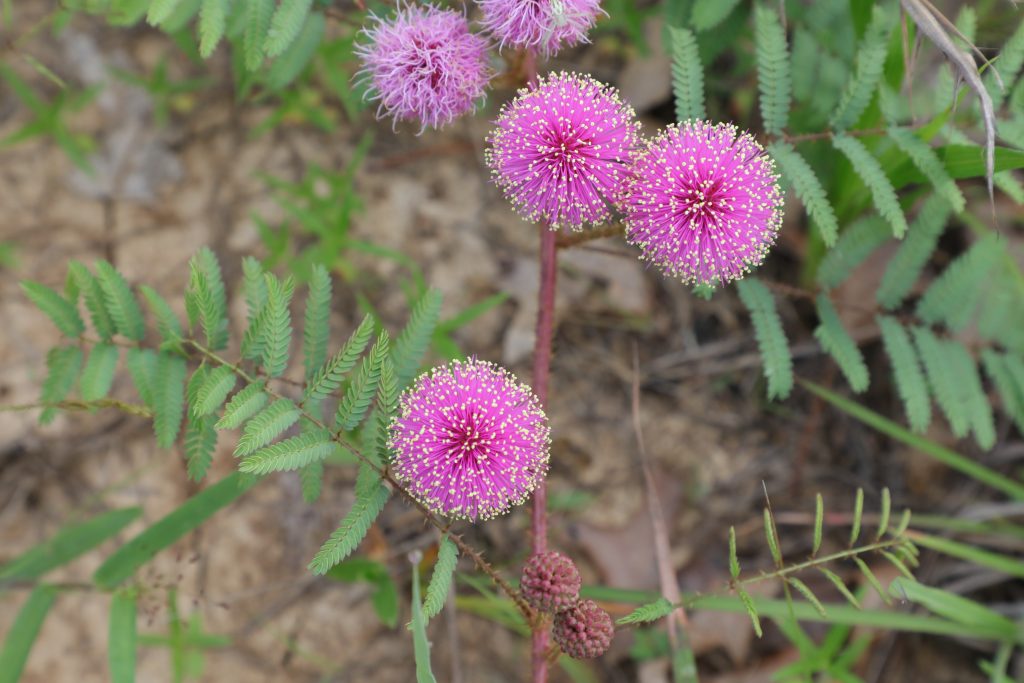
Things are happening in the prairies and grasslands this time of year. Get out and enjoy the wildflowers and wildlife.




